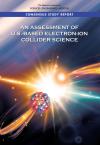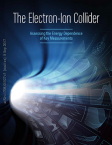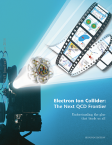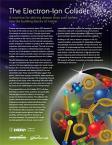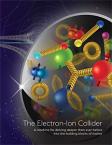Searching for a hill to climb on a flat peninsula
As the head of Jefferson Lab’s new Data Science department, Malachi Schram, prepares to move across the country from his mountainside home in Washington state to the lab’s headquarters in Newport News, he has more than just simple adjustments to make. Schram, a competitive ultra-runner, needs to figure out where to find the big hills.
“I like to start my day with a training run up the mountain by my house in Washington,” Schram says. “It’s a 4,000-foot mountain trail run and a really good workout that keeps me in shape for longer races. Newport News is quite flat, so I may have to switch to triathlons to make sure I get a challenge.”
Schram likens his interest in taking on athletic challenges to the long-view data science goals he has at the lab.
“My interest is in trying to leverage artificial intelligence (AI) and machine learning to enhance technology,” he says. “We’re trying to leverage both of them in order to accelerate scientific discovery and try to improve the operations of the accelerator.”
Just as Schram collects data on his body’s performance over years of training so that it can perform optimally during a race, he creates technologies that can respond to a changing environment and set of circumstances in order to perform optimally at a given task.
We are constantly asking of the technologies, “How do we improve? How do we make it more intelligent—more productive and efficient?” Schram says. “We have to have technology that can adapt to the conditions. If I want the accelerator or detector to perform better, the AI needs to learn what ‘better’ means. It has to determine what is the right performance and what is the best move. Having our technology actually learn what to do next is what we’re focusing on—in an optimal, quantifiable way.”
An example of this endeavor is with robotic arms that may be used during an experiment.
“Elements of the accelerator stem can be controlled by some sort of intelligent algorithm.” Schram explains. “You don’t teach the system in terms of defined rule, you teach it by experiencing the system and learning the subtle dynamics of the system by repeatedly exploring small changes and adjustments so it can learn how to respond better next time.”
The process of training AI algorithm to learn a complex system to perform optimally requires countless training runs over a long period of time. Just like with training for a race, Schram teaches the technology to be able to predict movements and adapt based on circumstances and unplanned events.
“You have moments in a 50-mile race when your body gets depleted of glycogen and, unless you planned properly, you’re gonna bonk,” Schram says. “You know that and can expect that, because of all of the training you’ve done. It’s predictable, even though it’s hard to go through. We’re all going to have low moments in the process—of the race and of creating this technology—and you wonder what you’re doing. You have to anticipate those lows as a scientist and as a racer and realize you’re going to punch through.”
For Schram, success comes from repetition and training in the lab and on the mountainside. He also recognizes that, while the process of achieving a goal may be long and fraught with constant analysis and adjustments, the first step is getting involved.
“You can be gifted and do great things, and if you work hard, nobody can take that hard work away from you,” Schram say. “Still, you might not be the best. Hard work doesn’t guarantee success. But, you can guarantee failure if you don’t work hard.”
By Carrie Rogers





